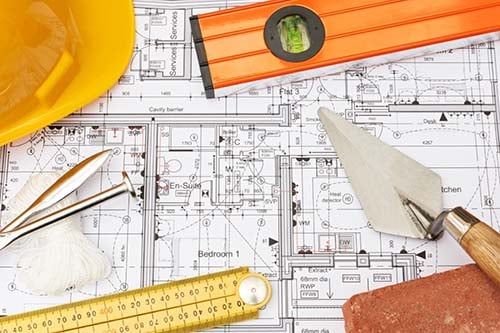 The near future is slated to be a huge and exciting year for sustainable architecture and design.
The near future is slated to be a huge and exciting year for sustainable architecture and design.
Why? In part, because sustainable building design ideas once considered radical are now crossing over to the mainstream. Now, everyone from architects and small business owners to local municipalities and global governance bodies can get help make the world a cleaner and greener place with projects both big and small. Innovators in the sustainable building space are using new materials to create buildings that are cleaner, smarter, and even more cost effective over time.
Here are some inspiring trends that will define the way people build sustainably in the near future and beyond:
Green building will become the norm. It’s uncommon for a decrease in certification demand to be a good sign for a product or service. However, according to Building Design + Construction, that appears to be the case for green construction, as growth for LEED certifications year-over-year appears to have plateaued. Why? In part, it stems from increasing competition from other international certification services — competition that pushes the industry for higher standards and indicates strong demand.
Still more buildings aren’t being advertised as “green” by developers in the commercial sector, despite their sustainable design. A major oversight from a marketing standpoint for sure, but it also indicates that technologies considered vanguard a decade ago are now firmly in the mainstream. Green building is becoming the new norm as sustainable technologies become more affordable.
The popularity of passive design. Sustainable design today means more than adding green features to existing design motifs. Green living is now at the heart of much architectural planning from sourcing materials to the fundamental layout of the property.
Passive design, which achieves carbon neutrality without mechanical aid, is growing in popularity by the year in part because it’s very low maintenance. Simple tactics, like redirecting sunlight away from windows using awnings during the summer, make a huge difference for energy efficiency and require no mechanical elements. Better yet, this kind of passive cooling tactic is not out of reach for small businesses or private residences due to cost — anyone can make this kind of upgrade.
With all this in mind, what are some cool ideas to keep an eye out for in 2018 and beyond?
Leaner and greener materials. For years, designers focused on ways to produce power and reduce water use once buildings were occupied. Many of the latest trends are centered on the construction side of development, using sustainable materials with the end goal of achieving carbon neutrality from the ground up.
One of the more exciting examples of this push for revolutionary building materials is hemp block. This form of concrete is made from a combination of hemp fiber with sand and lime. The hemp used for binding each block consumes more carbon dioxide while growing than a standard residential home does during development. That reduces the carbon footprint of a building considerably — in many cases making it carbon negative.
Retrofitting existing building stock. In the coming years, retrofitting existing buildings to be more energy efficient will become ever more important as downtown revitalization projects intensify and grow in popularity. That means more than installing solar panels though. Designers and architects are putting considerable focus on achieving carbon neutrality affordably without changing the character of older buildings.
Retrofitting for existing buildings means more than just updating windows and appliances though. Smart designers are redeveloping existing stock using the same principles of passive design popular in new developments. For example, one easy and affordable way is to manage sunlight using awnings and umbrellas. Simply installing an awning to block solar radiation through windows during hot summer months can reduce solar heat gain by nearly 80 percent.
More connection with the natural world. A lot of architects are designing buildings that are literally going green. Covering rooftops and exterior walls with living plants — grasses, ivy, local permaculture, and more — will actively reduce a building’s carbon output and help manage temperature passively.
One of the more remarkable examples, Malaysia's Forest City is designed to integrate into the local ecosystem seamlessly into a holistic and sustainable urban-environmental microculture. According to the Forest City website, “The entire city is covered by vertical greeneries, sky gardens, and a rooftop gardening system, forming a natural barrier that saves energy, purifies the air, conserves rainwater, and reduces noise.”
Water efficiency is next. Sustainable development of the past decade has been motivated by fighting global warming through carbon reduction. Now that more buildings are approaching net-zero carbon emissions, designers are taking on our next major challenge. Sixty percent of firms polled by Architecture Magazine anticipate that water conservation will be one of the top client sustainability priorities in the coming decade.
It’s safe to say now that sustainable building is sure to define the way properties are developed in the future. Projects large and small aimed at greener living are on the horizon, from full cities built to mimic natural environments to a well placed awning to keep down cooling costs at your local cafe. Keep an eye out for these exciting developments in the year to come.
Are awnings actually effective at reducing energy usage? Get the answers in our new eBook: Do Energy Efficient Awnings Really Work? The Science Explained.
